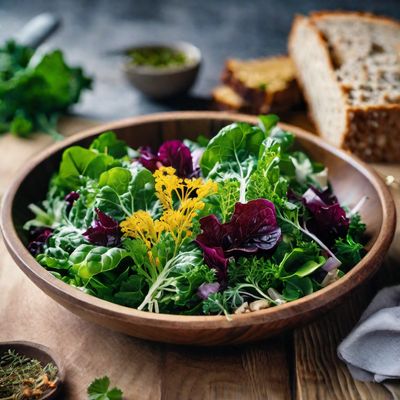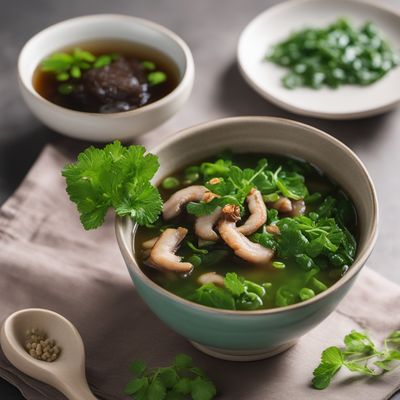
Ingredient
Watercresses
The Peppery Green Delight
Watercresses, the peppery green delight, are leafy greens with a distinct peppery flavor and crisp texture. These vibrant greens add a refreshing bite to salads, sandwiches, and various dishes. With their high nutritional value and versatility, watercresses have been enjoyed for centuries.
Origins and history
Watercresses have a long history and were consumed by ancient Greeks and Romans for their medicinal properties. They were later cultivated in Europe and introduced to North America. Watercresses are often found growing near clean water sources such as streams or springs. Today, they are widely cultivated and enjoyed worldwide.
Nutritional information
Watercresses are packed with essential vitamins and minerals, including vitamins A, C, and K, as well as calcium and iron. They are low in calories and high in antioxidants, making them a nutritious addition to any meal. A 100-gram serving of watercress provides only 11 calories.
Allergens
May contain allergens such as mustard or other cruciferous vegetables.
How to select
When selecting watercresses, look for vibrant green leaves that are crisp and free from wilting or yellowing. Avoid any signs of discoloration or sliminess. Opt for bunches with smaller leaves, as they tend to have a milder flavor. Additionally, choose organically grown watercresses to minimize exposure to pesticides or contaminants.
Storage recommendations
To maintain freshness, store watercresses in the refrigerator. Place them in a plastic bag or wrap them in a damp paper towel to prevent wilting. Use them within a few days for the best flavor and texture.
How to produce
Watercresses can be easily grown in a backyard garden or even in containers. They thrive in moist soil and require regular watering. Plant the seeds or seedlings in a sunny or partially shaded area, and ensure they have access to clean water. Harvest the leaves when they reach the desired size, usually within 6 to 8 weeks.
Preparation tips
Watercresses can be enjoyed raw in salads, sandwiches, or smoothies, adding a peppery kick. They can also be lightly sautéed or blanched and used as a side dish or added to soups, stir-fries, or pasta dishes. Additionally, watercresses make a flavorful addition to pestos or sauces.
Substitutions
Arugula or baby spinach can be used as substitutes for watercresses, although they have milder flavors. If a peppery taste is desired, mustard greens or radish greens can be used as alternatives.
Culinary uses
Watercresses are commonly used in salads, sandwiches, and soups, adding a refreshing and peppery flavor. They are also popular in British cuisine, where they are traditionally used in watercress soup or as a garnish for roast beef sandwiches. In Asian cuisines, watercresses are often stir-fried or used in hot pot dishes.
Availability
Watercresses are cultivated and consumed worldwide. They are commonly available in Europe, North America, Asia, and Australia. They can be found in grocery stores, supermarkets, farmers markets, and even foraged in the wild in some regions.
More ingredients from this category
Recipes using Watercresses

Berros regionales with a Twist
Savory Spanish Watercress Delight

Syrian-inspired Spicy Watercress Salad
Zesty Watercress Delight: A Taste of Syria

Palestinian-style Cream of Watercress Soup
Refreshing Green Delight: Palestinian Cream of Watercress Soup

New Nordic Caesar Salad
Nordic Twist on a Classic: New Nordic Caesar Salad

Creamy Watercress Delight
Velvety Green Elixir: Cream of Watercress Soup

Potaje de Berros (Watercress Stew)
Hearty Spanish Watercress Delight

Fujian-style Watercress Soup
Fujian's Delightful Watercress Medley